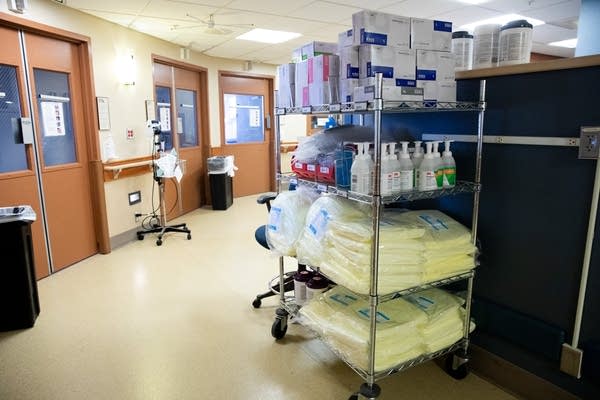'The wave is coming up upon us': Critical care doctors already feeling effects of COVID surge

PPE and sanitizer sit on a cart at Bethesda Hospital in St. Paul in March, as the hospital prepared to admit COVID-19 patients.
Evan Frost | MPR News file
Go Deeper.
Create an account or log in to save stories.
Like this?
Thanks for liking this story! We have added it to a list of your favorite stories.


